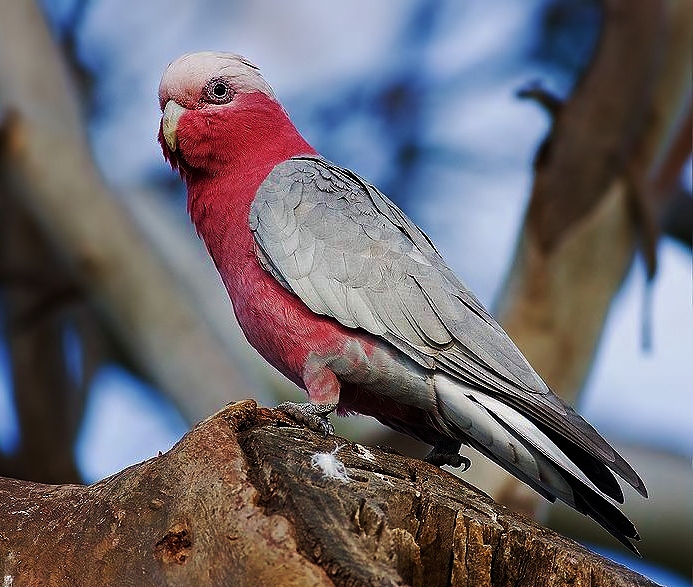 |
| (Photo from Wikipedia) |
Common name:
galah (en); cacatua-rosada (pt); cacatoès rosalbin (fr); cacatúa rosa (es); rosakakadu (de)
Taxonomy:
Order Psittaciformes
Family Cacatuidae
Range:
This species is endemic to Australia, being found throughout the country, including Tasmania.
Size:
Galahs are 35-36 cm long and weigh 270-350 g.
Habitat:
These birds generally avoid densely wooded areas, being found in a wide range of open habitats including wooded savannas, grasslands, scrublands, pastures, plantations and farmland. They are also common inside urban areas.
Diet:
They mostly feed on the seeds of grasses and agricultural crops, but will also eat insect larvae, fruits, berries, nuts, grasses, roots, green shoots, leaf buds, flowers and Eucalyptus seeds.
Breeding:
Galahs can breed all year round, with the breeding period varying between different parts of Australia. They nest in tree hollows or in cavities in cliffs. The female lays 2-6 white eggs which are incubated by both parents for 22-24 days. The chicks are fed by both parents and fledge 5-7 weeks after hatching, but only become fully independent 2-3 weeks later.
Conservation:
IUCN status – LC (Least concern)
This species has an extremely large breeding range and is described as common. The population is suspected to be increasing as ongoing habitat degradation is creating new areas of suitable habitat.







